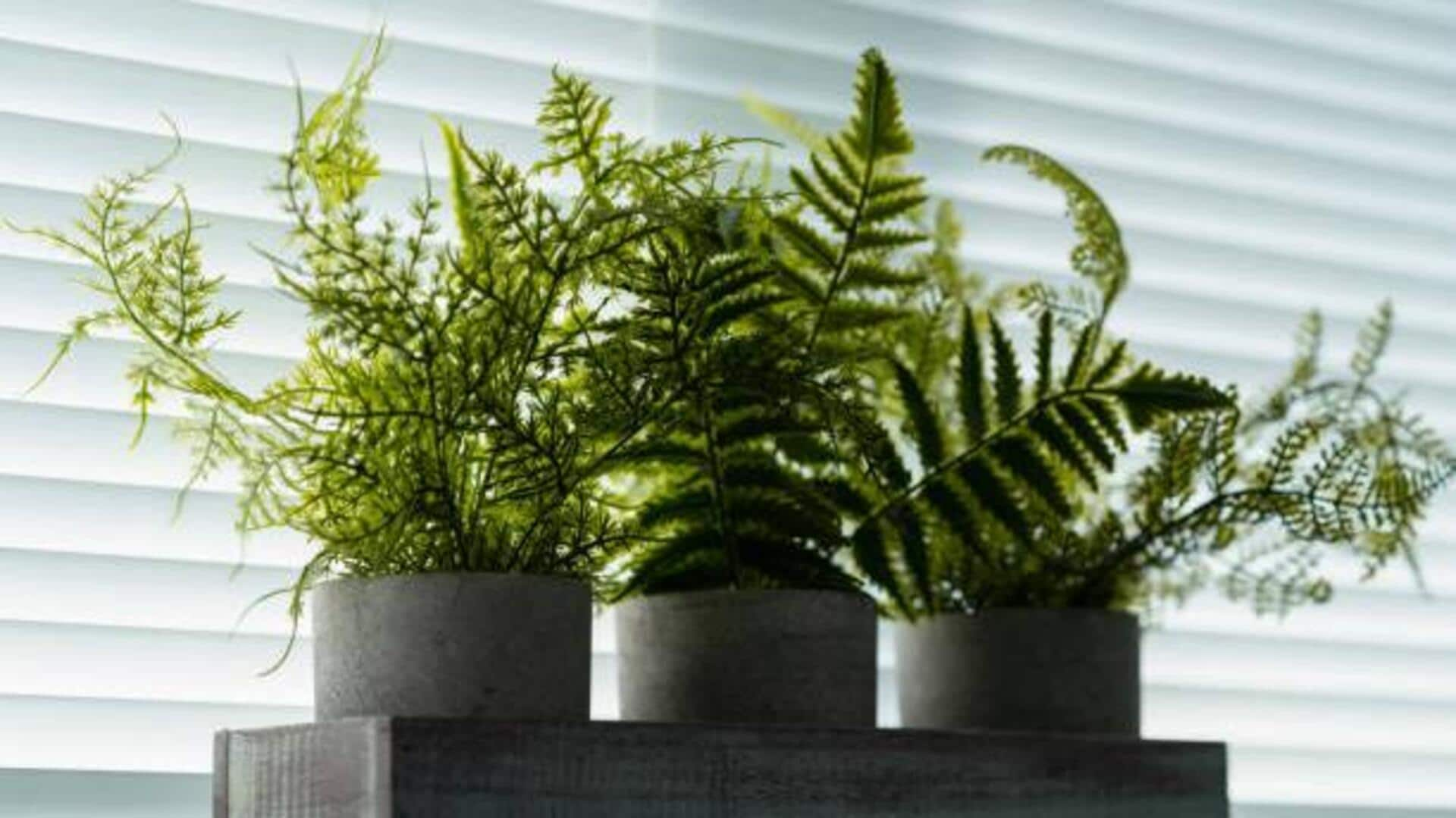
How to care for indoor ferns
What's the story
Indoor ferns make a great addition to home decor with their lush, green foliage and ability to prosper in different indoor conditions. However, keeping them healthy is not as simple as it sounds, it requires an understanding of their specific care needs. Here, we unveil some essential tips for keeping your indoor ferns vibrant and healthy.
Watering
Optimal watering techniques
Ferns need to be consistently moist but not overwatered. It is important to maintain evenly moist soil without it being waterlogged. A good practice is watering when the top inch of soil feels dry. Using room temperature water avoids shocking the plant's roots. Further, misting the leaves can help increase humidity levels, which is advantageous for most fern species.
Lighting
Ideal light conditions
Ferns also prefer indirect light as direct sunlight tends to scorch their delicate fronds. You can place them near a north or east-facing window for ideal lighting conditions. If natural light isn't enough, use fluorescent lights placed about 12 inches above the plants for 12-16 hours a day. This mimics the natural daylight and promotes healthy growth.
Humidity
Maintaining humidity levels
Ferns flourish in high humidity conditions, just like their natural habitat. To keep sufficient humidity indoors, try placing a humidifier close by. Or, keep your fern on a tray of pebbles and water. Keeping the pot above the water level prevents root rot. This arrangement also adds to the surrounding moisture around the plant.
Soil & fertilization
Soil and fertilization needs
Using a well-draining potting mix specifically designed for ferns will ensure proper aeration and moisture retention, without becoming compact over time. Fertilize sparingly during the growing seasons with a balanced liquid fertilizer, diluted to half strength, every four weeks. Avoid fertilizing during dormant periods, as it can do more harm than good to growth.
Pruning & pests
Pruning and pest control
Regular pruning keeps shape intact by removing dead/yellowing fronds, encouraging new growth while preventing disease spread in dense foliage areas where bugs may go unnoticed otherwise. Check regularly under leaves, looking for signs like webbing, which indicates spider mite presence. Treat infestations immediately with insecticidal soap solutions directly onto affected parts, covering the entire plant surface area thoroughly, including undersides where bugs tend to congregate most often.